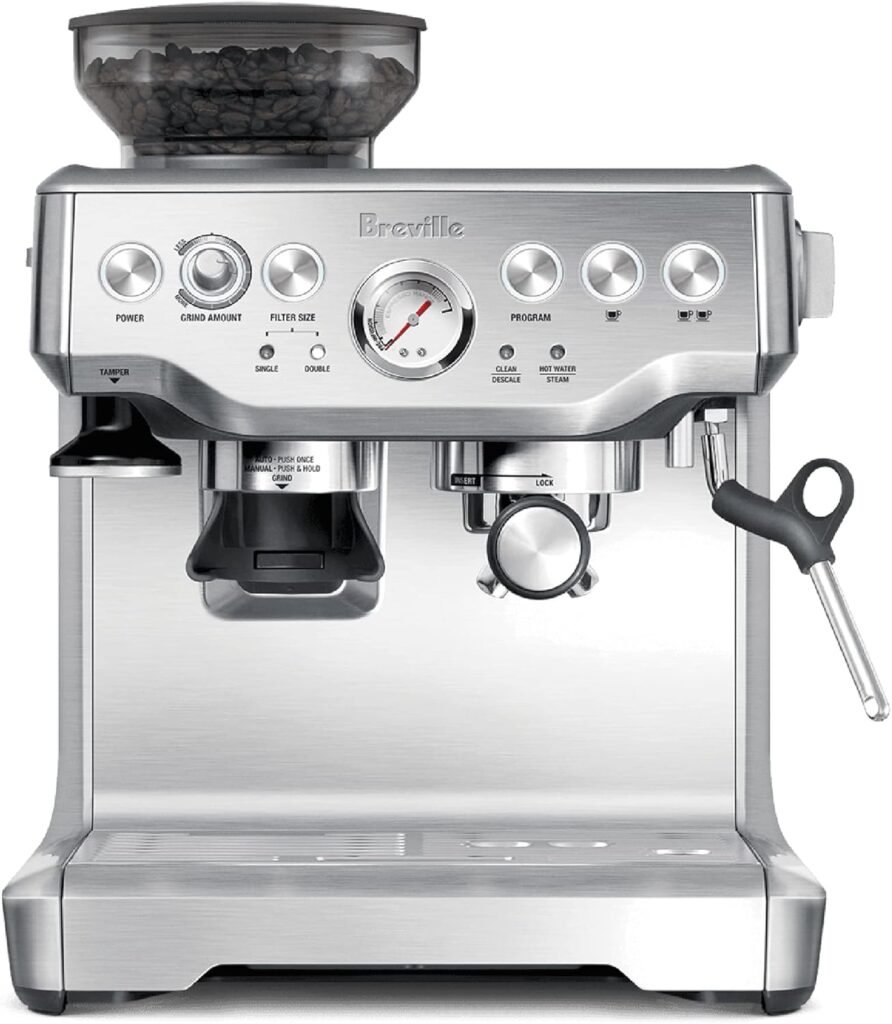Have you ever wondered what makes coffee so special? It’s not just the roasting or brewing process, but also the origin of the precious beans that contribute to its unique flavor and aroma.
I find myself wondering the journey of these beans, from the lush fields to our cups. The story begins in the tropical regions near the equator, where the climate and soil conditions are ideal for coffee production.
The regions with the perfect balance of temperature, rainfall, and sunlight allow coffee plants to thrive, producing high-quality coffee cherries that contain the coveted beans. In this article we’ll answer the question Where does Coffee Beans Come From?
Key Takeaways
- The origin of coffee beans plays a crucial role in determining the flavor and aroma.
- Coffee production is concentrated in tropical regions near the equator.
- Climate and soil conditions significantly impact coffee quality.
- Coffee cherries contain the precious coffee beans.
- The journey of coffee beans from fields to cups is a complex process.
The Origins of Coffee: From Legend to Reality
Unraveling the origins of coffee takes us on a journey through legend and fact. Coffee’s rich history is a blend of myth and reality, with stories that have been passed down through generations.
The Ethiopian Legend of Kaldi and His Dancing Goats
The legend of coffee’s discovery dates back to 9th-century Ethiopia, where a goatherd named Kaldi noticed that his goats became more energetic after eating red coffee cherries. This story has been passed down through centuries, becoming an integral part of coffee’s folklore. The legend not only highlights the energizing effects of coffee but also underscores its origins in the highlands of Ethiopia.

Historical Spread of Coffee Cultivation
Coffee cultivation spread from Ethiopia to the Arabian Peninsula, where it was cultivated and traded extensively. By the 15th century, coffee had reached the Middle East, and by the 17th century, it had spread to Europe. The historical spread of coffee is summarized in the following table:
| Region | Time Period | Notable Developments |
|---|---|---|
| Ethiopia | 9th century | Legendary discovery by Kaldi |
| Arabian Peninsula | 14th century | Cultivation and trade |
| Europe | 17th century | Coffeehouses become popular |
Today, coffee is grown in over 70 countries worldwide, with various regions contributing their unique flavors and characteristics to the global coffee market.
Understanding the Coffee Bean Plant
Understanding the coffee bean plant is crucial for appreciating the journey of coffee from seed to cup. The coffee bean plant, known scientifically as Coffea, is a tropical evergreen that thrives in specific climates.
The Coffea Plant: Characteristics and Growth Requirements
The Coffea plant is characterized by its dark green leaves and white, fragrant flowers that eventually turn into coffee cherries. It requires a subtropical climate with mild temperatures, high altitudes, and well-defined wet and dry seasons. The ideal conditions for coffee cultivation are found near the equator, where the temperature ranges from 60°F to 80°F.
Ideal Growth Conditions:
| Condition | Description | Optimal Range |
|---|---|---|
| Temperature | Mild temperatures | 60°F – 80°F |
| Altitude | High altitudes | 1,000 – 2,000 meters |
| Rainfall | Well-defined wet and dry seasons | 1,500 – 2,000 mm/year |
From Flower to Cherry: The Life Cycle of Coffee Beans
The life cycle of coffee begins with the flowering stage, where Coffea plants produce white, fragrant flowers. These flowers eventually give way to coffee cherries, which contain the coffee beans. The cherries ripen and turn red, yellow, or purple, depending on the variety.

The coffee cherries are then harvested, processed, and dried to extract the green coffee beans. The quality of the coffee beans is heavily influenced by the conditions under which they are grown and processed.
Major Coffee Bean Varieties Around the World
As a coffee aficionado, I’m excited to explore the major coffee bean varieties that shape the coffee industry. The world of coffee is rich in diversity, with various coffee bean types offering distinct flavors and qualities.
Arabica: The Premium Coffee Bean

Arabica coffee beans are renowned for their mild and nuanced flavor, making them a favorite among coffee connoisseurs. Grown at high altitudes, Arabica beans are more sensitive to temperature and humidity, resulting in a more complex flavor profile. Arabica coffee is known for its notes of fruit, floral, and wine, offering a sophisticated coffee experience.
Robusta: The Stronger Alternative

Robusta coffee beans, on the other hand, are known for their bold and bitter taste. With a higher caffeine content than Arabica, Robusta is often used as a base for instant coffee and espresso blends. Robusta beans are easier to grow and more disease-resistant, making them a popular choice for commercial coffee production.
Lesser-Known Varieties: Liberica and Excelsa
Beyond Arabica and Robusta, there are other lesser-known coffee bean varieties worth exploring. Liberica, native to West Africa, is known for its distinctive flavor profile with notes of fruit and spice. Excelsa, a hybrid of Liberica and Arabica, offers a balanced taste with a hint of sweetness. These unique varieties add to the rich diversity of the coffee world.
The Coffee Belt: Top Coffee-Growing Regions
The Coffee Belt, spanning the equatorial regions, is home to numerous countries that produce high-quality coffee. This region’s unique combination of climate, soil, and altitude creates ideal conditions for coffee production.
South and Central American Coffee Regions
South and Central America are renowned for their coffee production, with countries like Brazil and Colombia being among the top producers. Brazilian coffee beans are known for their mild flavor and are often used in blends.

The region’s coffee is grown in a variety of conditions, from the high-altitude farms of Colombia to the low-altitude farms of Brazil.
African Coffee Origins
Africa is the birthplace of coffee, and countries like Ethiopia and Kenya are known for producing some of the world’s best coffee. Ethiopian coffee beans are highly regarded for their distinctive flavor profiles, which can range from fruity to floral.

The region’s coffee is often grown at high altitudes, which contributes to its complex flavor profile.
Asian and Pacific Coffee Producers
The Asian and Pacific regions are also significant coffee producers, with countries like Hawaii and Indonesia producing high-quality coffee. Kona coffee beans from Hawaii are particularly prized for their smooth flavor and are grown on the slopes of volcanoes.

The unique terroir of these regions, combined with careful farming practices, results in coffee that is both flavorful and distinct.
From Cherry to Coffee Bean: The Processing Journey
From the coffee cherry to the coffee bean, the processing journey is a fascinating story of transformation. Coffee processing is a crucial step that transforms coffee cherries into the beans we use to brew our favorite coffee.
Wet Processing Method
The wet processing method involves removing the outer skin and pulp of the coffee cherry, leaving just the inner seed. This method is known for producing coffee with a cleaner and brighter flavor profile. The beans are then fermented in water tanks to break down the mucilage, a sticky substance that covers the beans.
Dry Processing Method
The dry processing method, also known as natural processing, involves drying the coffee cherries in their fruit. This method is often used in regions with limited water resources. The dried cherries are then hulled to reveal the green coffee bean. Dry processed coffees are known for their fruitier and sweeter flavor profiles.
Specialty Processing Methods
Specialty processing methods, such as honey processing and anaerobic processing, are gaining popularity among coffee producers. Honey processing involves removing the outer skin of the coffee cherry but leaving some of the mucilage intact, resulting in a sweeter and more complex flavor profile. Anaerobic processing involves fermenting the coffee cherries in sealed tanks, producing a unique and distinct flavor profile.

What Makes a Quality Coffee Bean
Coffee bean quality is influenced by a variety of factors, from cultivation to processing. Understanding these elements is crucial for appreciating the nuances of coffee.
Factors Affecting Coffee Bean Quality
The quality of a coffee bean is determined by several key factors, including the coffee plant variety, growing conditions, and processing methods. Arabica beans, for instance, are known for their higher quality compared to Robusta. Factors such as altitude, soil type, and climate also play a significant role in determining the flavor and quality of the coffee.
Understanding Coffee Bean Grading Systems
Coffee beans are graded based on factors like size, shape, and density. The grading system helps in identifying the quality of the beans. Grade A coffee beans are considered to be of the highest quality. Understanding these grading systems is essential for both coffee producers and consumers to ensure they are getting high-quality coffee.

Conclusion: From Bean to Your Morning Cup
From the lush fields to our morning cups, coffee’s journey is a fascinating tale. As we’ve explored, coffee beans come from various regions around the world, each with its unique characteristics and flavor profiles. The careful processing of coffee cherries, whether through wet or dry methods, significantly impacts the final product.
The quality of coffee beans is determined by factors such as soil, climate, and altitude. Understanding these elements helps appreciate the craftsmanship that goes into producing high-quality coffee. As consumers, we can enhance our coffee experience by choosing beans from reputable sources and learning about their origins.
In conclusion, the journey of coffee from bean to cup is a complex and nuanced process. By appreciating the efforts of coffee farmers and the intricacies of coffee production, we can enjoy our daily cup with a deeper understanding and appreciation.


